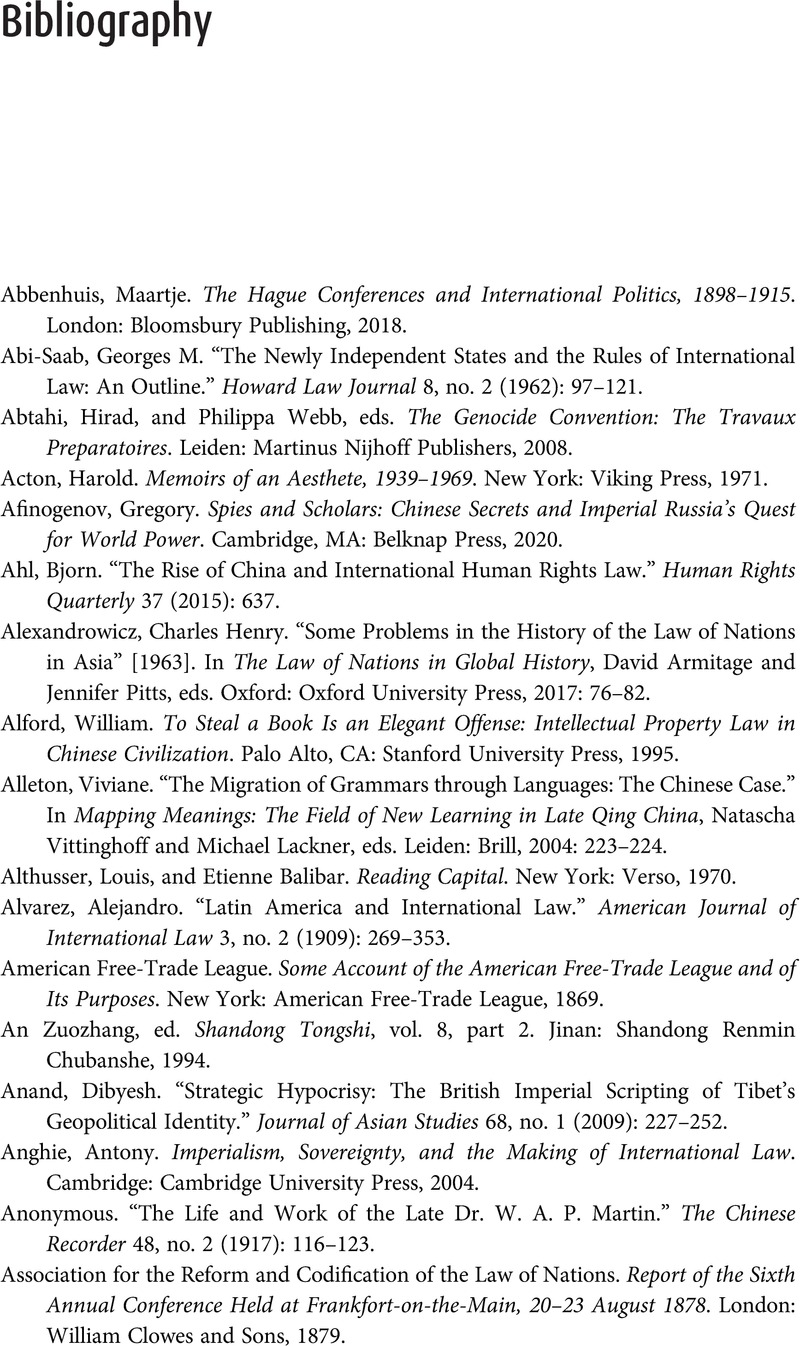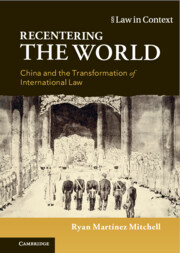Book contents
- Recentering the World
- Law in Context
- Recentering the World
- Copyright page
- Epigraph
- Contents
- Acknowledgments
- Archives and Databases Consulted
- Treaties, Agreements, and Legislation
- Cases
- Introduction
- Part I Preserving Stateliness, 1850–1894
- Part II Asserting Sovereignty, 1895–1921
- Part III Internationalisms, 1922–2001
- Glossary of Chinese and Japanese Names
- Notes
- Bibliography
- Index
- References
Bibliography
Published online by Cambridge University Press: 27 October 2022
- Recentering the World
- Law in Context
- Recentering the World
- Copyright page
- Epigraph
- Contents
- Acknowledgments
- Archives and Databases Consulted
- Treaties, Agreements, and Legislation
- Cases
- Introduction
- Part I Preserving Stateliness, 1850–1894
- Part II Asserting Sovereignty, 1895–1921
- Part III Internationalisms, 1922–2001
- Glossary of Chinese and Japanese Names
- Notes
- Bibliography
- Index
- References
Summary

- Type
- Chapter
- Information
- Recentering the WorldChina and the Transformation of International Law, pp. 286 - 310Publisher: Cambridge University PressPrint publication year: 2022



